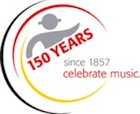David's Tip of the Day: Pitch Generator: Work on your Rhythm... Work with a Metronome - Part 5
This has nothing to do with rhythm, but it does have to do with a feature of some of your metronomes (and tuners). Grab your metronome and tuner and see if they have a feature for pitch generation. For tuners, instead of the tuner "receiving" sound and identifying it, it "sends" sound by playing a reference pitch for you. Here are a couple of scenarios that I find useful...
Bending
Working with a C Harmonica, let's say you want to dial in your 3 draw bends. Set the reference pitch to Bb (half step bend = 3') and try to match the pitch... then change the pitch to A (3")... etc. Tunes are not that fast at locking into pitch... using a reference pitch is much faster than waiting for a needle display to settle in, and makes possible the next two tips...
Positions
Let's say you're exploring 3rd Position... this is the key of D. Set your reference pitch to D so you have a reference point of your home bass (tonic). Improvise (with or without a jam track) and the pitch generator is always there for a tonic reference (D = 1, 4 and 8 draws).
Scales
My private students practice all of their modes in their lessons... going from C to C (Major), D to D (Dorian), E to E (Phrygian), etc. Do the same pitch reference we talked about for Positions. If you're working F to F, then set your reference pitch to F, this way it gives you a tonic reference. This is a common tool used by upright bass players when practicing scales. Due to the fact that upright basses have no frets, it's a challenge to stay in tune and after doing two octaves of a scale it's not uncommon to end sharp or flat (this tip was given to me by my upright instructor... his name is Stan Poplin, you may know that name because he played the bass on the Charles Ford Blues Band release when Mark Ford was 16 years old and blowin' like someone twice his age. Thanks Stan!).

